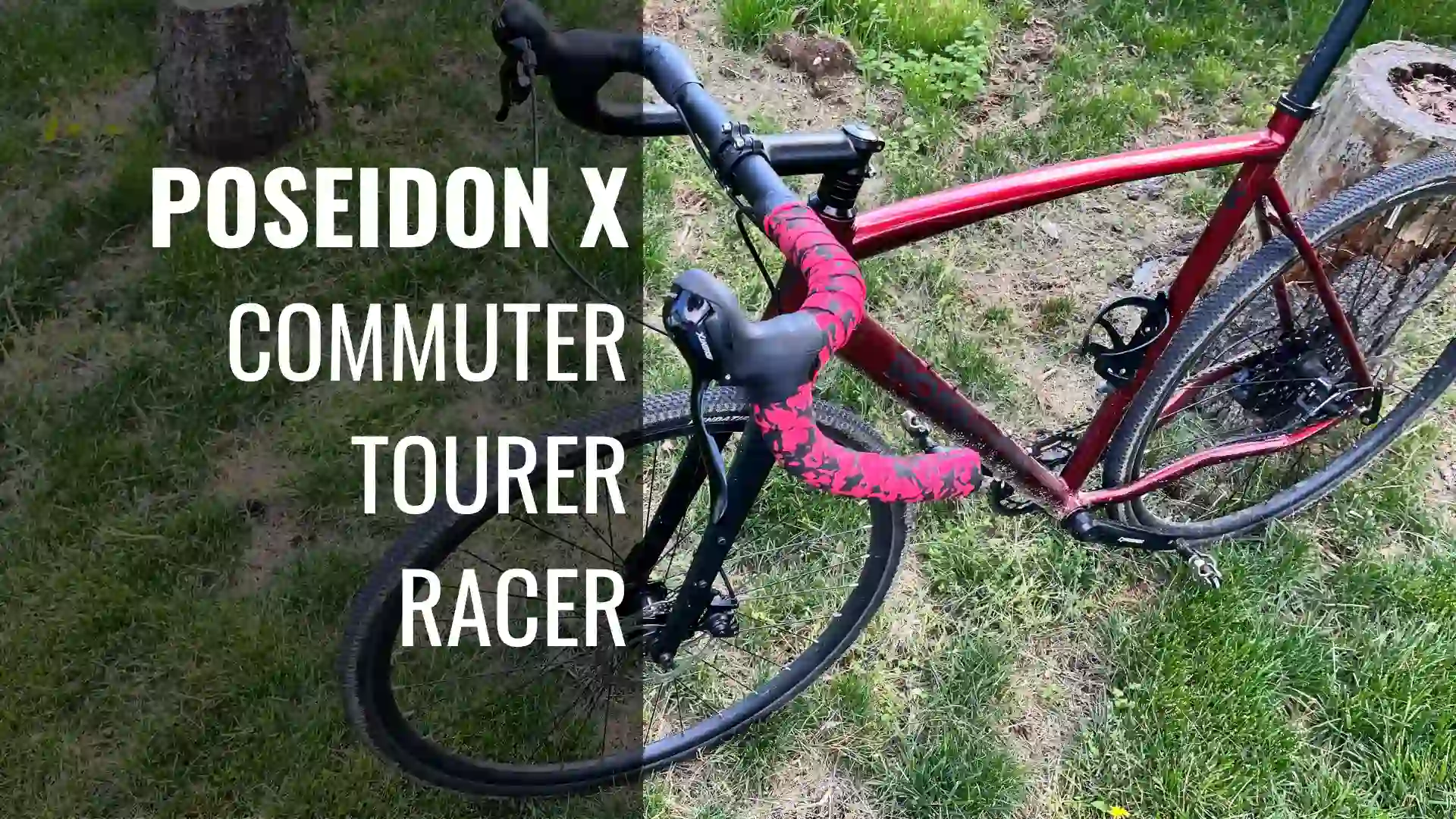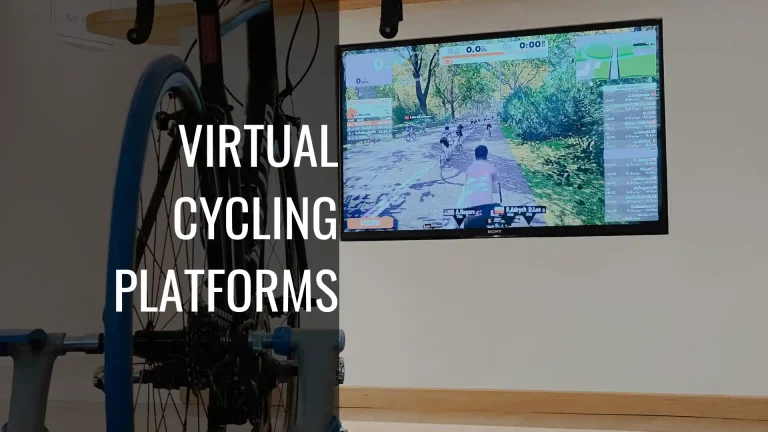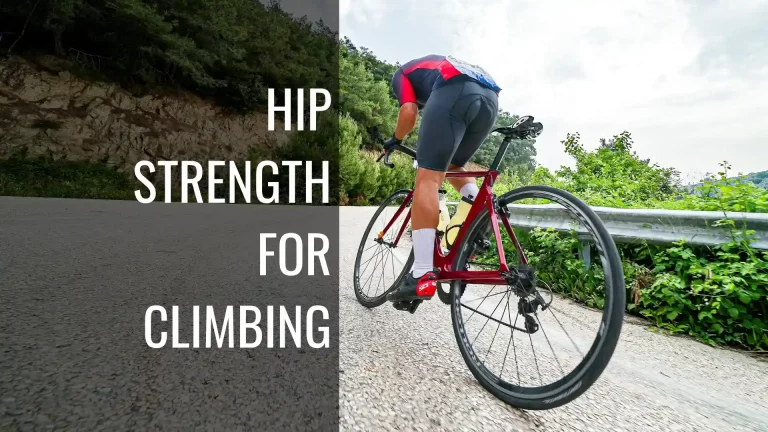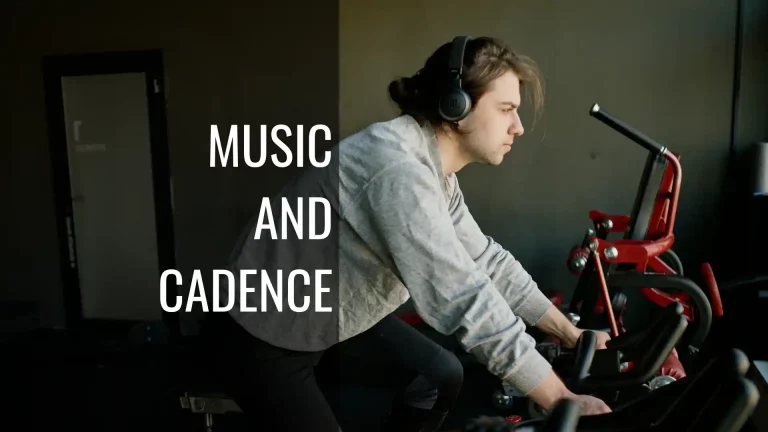
In this post we give you some ideas to make your Poseidon X as versatile as possible, with options for tires, seats, pedal, handlebars, and even which terrain brings out the best in the Poseidon X bike.
PEDAL MY WAY NEWSLETTER
Weekly training tips, cycling strategies, and fitness insights for sustainable performance.
No spam—just actionable guidance to help you train smarter.
Table of Contents
The Versatility Promise: What Makes a True Multi-Discipline Bike
A true multi-discipline bike is like a Swiss Army knife on two wheels. It’s versatile, capable, and designed to handle a wide variety of riding conditions. These variety includes commuting, road, gravel, light touring, fitness, and sometimes even bikepacking or cyclocross—without being locked into just one category.
Here’s what makes a bike truly multi-discipline:
Geometry: The Middle Ground
- Balanced position: Not as aggressive as a race road bike, not as upright as a cruiser.
- Stable but responsive handling: Can corner on tarmac and remain steady on gravel or dirt.
- Clearance for multiple wheel/tire setups: Example: 700c x 28mm slicks for fast road rides OR 700c x 40–45mm (or 650b x 47mm) for gravel/adventure.
Frame & Fork Design
- Wide tire clearance: At least 40mm on 700c or option for 650b.
- Mounting points: for racks, fenders, and bottle cages—lets you commute, tour, or ride minimalist gravel.
- Durable materials: Aluminum for affordability, steel for toughness, carbon for lightweight versatility.
Drivetrain Versatility
- Wide gear range: sub-1:1 climbing gear + high-end road gearing.
- 1x drivetrains: Simplify off-road riding but may limit top speed for road.
- 2x drivetrains: Still best for true multi-discipline use (gravel climbs + road speed).
Brake System
Disc brakes (hydraulic preferred): Gives consistent stopping power on wet roads, gravel, or loaded touring. Works equally well across all conditions, making them non-negotiable for a do-it-all bike.
Wheelset Flexibility
- Tubeless-ready wheels for comfort and puncture resistance.
- Wheel Flexibility: Ability to swap between road wheels (light, narrow tires) and gravel wheels (wide, knobby tires) without changing the frame.
Accessory Compatibility
- Racks & panniers: for commuting & touring.
- Fender mounts: for year-round utility.
- Dropper posts (optional): extra control for off-road/gravel.
Ride Feel & Durability
- Needs to hold up under load (for commuting or bike-packing).
- Comfortable enough for long days, but stiff enough to feel responsive on tarmac.
In short, a true multi-discipline bike is not the best at any one discipline, but good enough at many, a sort of Jack-of-all-trades, thanks to smart geometry, wide tire clearance, disc brakes, and the ability to adapt with components.
Urban Commuting Setup: Optimizing the Poseidon X for Daily Rides
The Poseidon X is already a strong platform for a multi-use bike, and with some tweaks it can be turned into a very reliable daily commuter. I use it mainly for gravel rides, but have used it for a quick run to the store or for a ride around my neighborhood.
Since urban riding has unique demands (traffic, stop-and-go, weather, carrying capacity), here’s how you can optimize the Poseidon X for daily rides:
Tires & Wheels
The Poseidon X usually comes with 700x35c tires, stock, from the “store”. To make it urban friendly, switch to puncture-resistant tires (e.g., Continental Contact Plus, Schwalbe Marathon, WTB Byway with tubeless setup). As for tire thickness (Width) the sweet spot is usually 32–38mm slick or semi-slick. These are fast on pavement, still comfortable. If possible, run tubeless for fewer flats.
Fenders
They keep you dry in rain and prevents road grime from spraying. Full-coverage fenders like SKS Bluemels or PDW Full Metal Fenders fit with the X’s clearance. If you want something lighter: clip-on fenders like Ass Savers or SKS Raceblade.
Carrying Solutions
The default and simplest to install is a rear rack; Poseidon X has rack/fender mounts, so you can attach a lightweight commuter rack (e.g., Topeak Explorer). You can also add panniers or a trunk bag for laptop/gym gear.
A Frame bag or handlebar bag is convenient for quick-access items if you don’t want a rear rack.
Drivetrain & Gearing
The stock 1x drivetrain is simple and reliable. For commuting consider switching to a narrow-wide chainring with a few more teeth (e.g., 42T–44T) if you have long, flat rides and want more top speed.
Stick with the stock setup if your route has lots of stop/start or hills.
Brakes
As I (and many others online) have experienced, the stock mechanical disc brakes work, but has a lot to improve on. I changed the housing cable and saw marked improvement, though not ideal. Not a bad initial set up for trail riding, but urban riding needs a more confident stopping power, so an upgrade to hybrid or full hydraulic calipers (e.g., Juin Tech GT-F, TRP HY/RD, or full Shimano GRX Hydros).
Lighting & Visibility
The bike doesn’t come with a light. So you have many options for lighting. Try to go for Rechargeable front light (USB, 600–1000 lumens for urban). For the rear, seat-post mount or rack-mounted.
Consider reflective tire sidewalls or rim stickers. A related post on gives you more details on how to make you and your bike more visible on the road.
The 3 points where you come in contact with the bike are the handlebars, the seat, and the pedals. There are numerous options to make these areas fit you as best as possible.
Flat pedals with grip: (e.g., OneUp composite, Race Face Chester) if riding in normal shoes. Go for a clipless SPD pedals if you want efficiency and ease of use on busy roads.
Comfy seat/ saddle tuned for your ride style (Brooks Cambium or Fabric Scoop).
Handlebars: The bike comes with drop handlebars. If the stock setup is not ideal, you can get handle bars that are more flared-out or flared-in. Add a gel bar tape or bar-top grips for comfort during rough terrain, or stop-and-go traffic.
Security
A quality U-lock (e.g., Kryptonite New York Lock or ABUS Granit).
Secondary cable for wheels/saddle.
Security skewers if leaving it outside regularly.
Poseidon X Commuter Build Example
This is a list of items you can use to make your Poseidon X more city/ urban friendly:
Tires: Schwalbe Marathon Supreme 700x35c (puncture-resistant).
Fenders: SKS Bluemels 45mm.
Rack: Topeak Explorer with panniers.
Lights: Knog Blinder (rear) + Cygolite Metro Pro (front).
Brakes: Juin Tech GT-F hybrid hydros.
Pedals: OneUp Composite flats (for sneakers).
Touring Configuration: Long-Distance Comfort and Cargo Capacity
The Poseidon X can be adapted into a surprisingly capable touring and bike-packing rig with the right configuration. Touring setups focus on all-day comfort, reliability, and cargo capacity rather than pure speed.
Here’s how you can configure the Poseidon X:
Frame & Mounting Points
The Poseidon X comes with rack and fender mounts, which are ideal for adding bags for panniers and bottle cages. Add fork-mounted cargo cages if you want front storage. Consider front lowrider racks for stability if carrying heavy panniers.
Wheels & Tires
The Poseidon X comes with 35c tires. For durability and comfort, go for tires with thickness between 38–42mm, such as Schwalbe Marathon Plus / Vittoria Mezcal / WTB Venture. Remember that wider tires provide more comfort and stability with weight. Try to run tubeless to reduce flats.
If you would like to upgrade wheels, go for hand-built 32–36 spoke wheels for load capacity.
Drivetrain & Gearing
The Poseidon X’s stock 1x is optimal for light touring, but consider a smaller chainring (38T or 36T) for loaded climbs. If possible, swap to a 2x system such as GRX 2x for true touring range (better for long climbs + speed on flats). For cassette, go for 11–42T or 11–46T for extra low-end torque.
Brakes
A touring bike needs needs reliable stopping with heavy loads. Upgrade to hydraulic discs or hybrid calipers such as (Juin Tech, TRP HY/RD). Sintered/ metallic pads last longer on descents.
Cargo Capacity
As stated earlier, the Poseidon X comes with frame mounts for mounting storage. Rear rack and panniers such as Ortlieb Back-Roller Classics = gold standard can offer good storage. Use front rack or fork cages for weight distribution. Frame bags are ideal for for tools/snacks (fits inside main triangle between the top tube and down tube near the head tube).
Top tube bag / stem bag provides quick access to snacks/phone. Handlebar roll bag can be storage for tent/sleeping bag.
Comfort Upgrades
Saddles: For your seating comfort, choose a saddle you can sit on for many hours. Take a look at touring favorite such as Brooks B17 or Cambium. These need break-in periods, but provide unbeatable comfort.
Bar setup: Go for wider flared drop bars for stability. Or add clip-on bar ends or aero bars for extra hand positions on long rides.
Thick gel bar tape or double-wrapped tape for vibration damping.
Suspension seat-posts such as those form Suntour, Redshift, provide added comfort if riding rough roads.
Lighting & Power
To see where you are going, especially off-road, invest in some lights for your bike. Here are a few options:
- Dynamo hub wheel + front/rear dynamo lights = infinite run time.
- USB rechargeable lights + power bank strapped to top tube.
Try to get some solar panel for camping and charging gadgets if going ultra long-distance.
Other Essentials
Some of the things you might need when on the bike –
- Two or three bottle cages (maybe add under down tube).
- Kickstand (touring-specific like Pletscher or Ursus, if you prefer).
- Spare parts: chain links, brake pads, tubeless plugs, folding tire.
Poseidon X Touring Build Example
- Drivetrain: 1×11 w/ 38T chainring + 11–46T cassette.
- Tires: Schwalbe Marathon Mondial 700x40c, tubeless.
- Brakes: TRP HY/RD hybrid hydros.
- Cargo: Ortlieb rear panniers + Salsa Anything Cages on fork + frame bag.
- Comfort: Brooks Cambium C17, double bar tape, flared drops.
- Lighting: Dynamo front hub powering Busch & Müller lights.
This post describes how I planned for a little cycling trip to the Catskills region a few years ago.
Racing Performance: Can the Poseidon X Compete on Gravel Courses?
The Poseidon X can certainly be used for gravel racing, although it may not be the top choice for serious racers. While the bike offers excellent value for money and a solid foundation for gravel riding, it may not have the same high-end performance components found on dedicated racing bikes.
However, with some modifications and upgrades, such as swapping out the handlebars, rotors, and seat post, as well as fine-tuning the gearing, you can improve the bike’s racing performance. Whether it can truly compete in gravel racing depends on the type of course and how you configure it. Let’s break it down:
Geometry & Frame
When it comes to endurance-style geometry the Poseidon X has a more relaxed setup than a pure race gravel bike, like a Canyon Grail or Specialized Diverge. This means that the Poseidon X prioritizes
- Comfortable over long miles
Stable handling on rough gravel
Slightly less aggressive/sprinty than race bikes
For long-distance gravel endurance events (Unbound 100/200, BWR, etc.), this geometry is actually a benefit. But for shorter, high-speed races, it may feel less responsive.
Weight
Poseidon X’s frame is aluminum and not as light as carbon race bikes. In stock build the bike weights around 23–24 lbs (10.5–11 kg). Carbon gravel race bikes often weigh between 18–20 lbs.
In racing, on rolling gravel, weight matters less than aerodynamics and tire choice. On climbs, the weight penalty is noticeable.
Drivetrain
Poseidon X’s stock drive train is a 1×10 Advent X (11–48T cassette). It is simple, durable, great range for steep gravel climbs. But the gaps between gears are bigger, so you may spin out at high speeds on flat/fast courses.
To make it race worthy, try to upgrade with a 11-speed or 12-speed GRX 1x or 2x for tighter gear spacing. Go for a lighter crankset and cassette. This saves weight, saving you time, and and improving cadence control.
Tires & Wheel Setup
The bike comes with a 700x35mm tire. For racing, run tubeless for puncture resistance and lower pressures, which you need for cyclocross or gravel surface. Switch to 38–42mm fast gravel tires (like Panaracer GravelKing SK, Vittoria Terreno Dry, or Rene Herse), which as specially designed with thicker puncture resistant materials. Another way to save weight and improve time is to go with lighter race wheels . Carbon or alloy with 24–28 spokes can save ~1–2 lbs on average. Any way to save weight translates to improved time and podium position.
Braking
Poseidon X’s stock mechanical discs are fine for training/commuting, but in a race, they’re weaker and require more hand effort. Even for normal use, it is recommended to upgraded to a better Upgrade to hydraulic discs (Shimano GRX or SRAM Rival) for modulation + stopping power in descents.
Race-Specific Optimizations
Remove racks/fenders to shed weight.
Swap to carbon seat-post and handlebar for vibration damping and some cushioning.
Aero tweaks: narrower flared bar or clip-on aero bars for long, flat races.
Remove any other unnecessary accessories and add-ons.
Where the Poseidon X Can Compete
As strong and good the Poseidon X is, there are limitations on what it can do.
Where it shines
Grassroots gravel events (20–60 miles) → absolutely competitive with right tires & wheel upgrade.
Endurance gravel (100+ miles) → geometry favors comfort, so it can hold its own if you optimize drivetrain and wheels.
Amateur gravel races → great entry-level race bike, especially if you upgrade brakes and wheels.
Where It Struggles
Against high-end carbon race bikes on climbs and sprint-heavy courses where weight (or lightness) has a big impact on the outcome.
Elite-level gravel racing. Its weight, drivetrain, and brake setup hold it back. Weight, geometry and components play a big role in such races.
The Poseidon X won’t match the top-tier race machines in outright speed or weight, but it offers a strong platform for riders looking to race gravel without spending $3,000+. It is race-capable for amateur and endurance gravel events, especially as an entry bike into racing. With lighter wheels, tubeless fast-rolling tires, and a drivetrain upgrade, it can be surprisingly competitive.
Tire and Gearing Changes: Adapting for Different Riding Styles
Here’s how it breaks down:
Urban Commuting / Fitness Road Rides
Tire size: 28–35mm
Examples:
Continental Contact Plus (puncture-resistant commuter tire)
Panaracer GravelKing SS (fast with some grit protection)
Schwalbe Marathon Supreme (touring/commute hybrid)
For gravel racing, you need tires that are lightweight with a tubeless setup. You’re trying to go for balance of speed and traction, optimized for mixed surfaces.
Tire size: 35–42mm
Examples:
Rene Herse Snoqualmie Pass (super supple, race-focused)
Panaracer GravelKing SK
Vittoria Terreno Dry
For a long-distance touring setup, you are looking for durable, puncture-proof, long-lasting treads. These offer comfort, durability, and load stability for long miles under gear weight. Go for tires that are –
Tire size: 38–45mm (or 650b x 47–50mm)
Examples:
Maxxis Rambler 700x45c
WTB Venture 700x40c
Schwalbe Marathon Mondial or Plus Tour
Tire size: 30–34mm
Examples:
Continental GP 5000 AllSeason 32c
Vittoria Corsa N.EXT 30–32c
Gearing Changes for Different Riding Styles
Commuting / Flat City Rides
Setup: 42T or 44T chainring with 11–36T cassette.
Why: Keeps cadence smooth in traffic, higher top speed on flats.
Gravel Racing
Setup: 40T chainring with 11–42T cassette.
Why: Middle ground — high enough for fast gravel sections, low enough for climbs.
Upgrade option: 2x drivetrain (e.g., GRX 46/30 + 11–34T) for tighter gearing in long races.
Touring / Bikepacking
Setup: 36T–38T chainring with 11–46T cassette.
Why: Prioritize low-end gearing for heavy loads + steep climbs.
Alternative: 2x drivetrain (sub-compact 46/30 or 48/32) for loaded touring flexibility.
Endurance Road Riding
Setup: 42T chainring with 11–34T cassette.
Why: Keeps you spinning on flats, still gives moderate climbing gear.
Alternative: 2x compact (50/34 + 11–32T) → closer to a true road bike feel.
Remember that tires are for surface adaptation (slick for city/road, supple & fast for gravel racing, durable & wide for touring). Gearing is for effort adaptation (bigger chainring & tighter cassette for speed, smaller chainring & wide cassette for loaded climbs). The best combination
Cost Analysis: One Versatile Bike vs. Three Specialized Bikes
A lot of riders wrestle with the decision: Do I build up one versatile bike and adapt it with parts, or do I invest in multiple specialized bikes (road, gravel, touring)?
One Versatile Bike (e.g., Poseidon X or similar gravel/adventure bike)
- Base bike: $900–$1,300 (Poseidon X, State 6061 Black Label All-Road, or entry-level GRX-equipped gravel bike).
- Add-ons (for adaptability):
- Extra wheelset (road slicks vs. gravel tires): $400–$700.
- Tire options (commuter slicks, gravel race tires, touring tires): $150–$300.
- Cockpit tweaks (aero bar, bar tape, saddles): $100–$300.
- Racks/fenders/lights (for commuting/touring): $200–$400.
Total investment: $1,800–$2,700 for a bike that can be reconfigured for commuting, gravel racing, and light touring.
Pros
- Lower upfront + maintenance cost.
- Simple storage (one bike, less space).
- Consistent fit/feel across disciplines.
- Easy to “upgrade modularly” over time.
Cons
- Always a compromise — never perfect for any one discipline.
- Frequent wheel/tire swaps (time + wear).
- Heavier than a pure race or road bike.
Three Specialized Bikes
- Road Endurance Bike (for speed/fitness): $2,000–$3,500 mid-tier (e.g., Giant Defy, Trek Domane, Canyon Endurace).
- Dedicated Gravel Race Bike: $2,500–$4,500 (e.g., Specialized Diverge Comp, Canyon Grail, Trek Checkpoint SL).
- Touring / Bikepacking Bike: $1,800–$3,000 (e.g., Surly Disc Trucker, Kona Sutra, Salsa Fargo).
Total investment: $6,000–$11,000 for three bikes that excel in their category.
Pros
- Each bike optimized for its discipline (speed, cargo, comfort).
- No swapping parts/wheels between rides.
- Longer component lifespan (mileage spread across bikes).
- Easier to race competitively (weight and geometry advantages).
Cons
- Very high upfront and maintenance cost.
- Storage space needed for 3 bikes.
- Fit differences – may require adjustment each time you switch bikes.
- Overlap – your gravel bike might cover 80% of what the others do.
Head-to-Head Comparison
| Factor | One Versatile Bike | Three Specialized Bikes |
|---|---|---|
| Upfront Cost | $1.8k–$2.7k | $6k–$11k+ |
| Ongoing Cost | Lower (1x service) | Higher (3x service) |
| Performance | Good, but compromise | Excellent, optimized |
| Convenience | High (1 bike) | Medium (swap bikes) |
| Storage | 1 bike space | 3 bike spaces |
| Racing Potential | Entry-level race ready with upgrades | Fully competitive |
| Touring Load | Moderate, fine for bike-packing | Heavy-duty capable |
Summary
- One Versatile Bike → Best if you want cost efficiency, limited space, and “good enough” performance across disciplines. Ideal for riders doing commuting and gravel and the occasional touring. No swapping parts/wheels between rides.
- Three Specialized Bikes → Best if you have budget + space and want max performance in each category (e.g., serious racing, long expeditions, and dedicated road mileage).
BUT… As a smart middle path some riders might take:
- One gravel/all-road bike (90% of riding)
- Add a cheap used touring rig ($600–$1,000 steel bike) OR a fast road wheelset → covers most scenarios without going full 3-bike garage.





